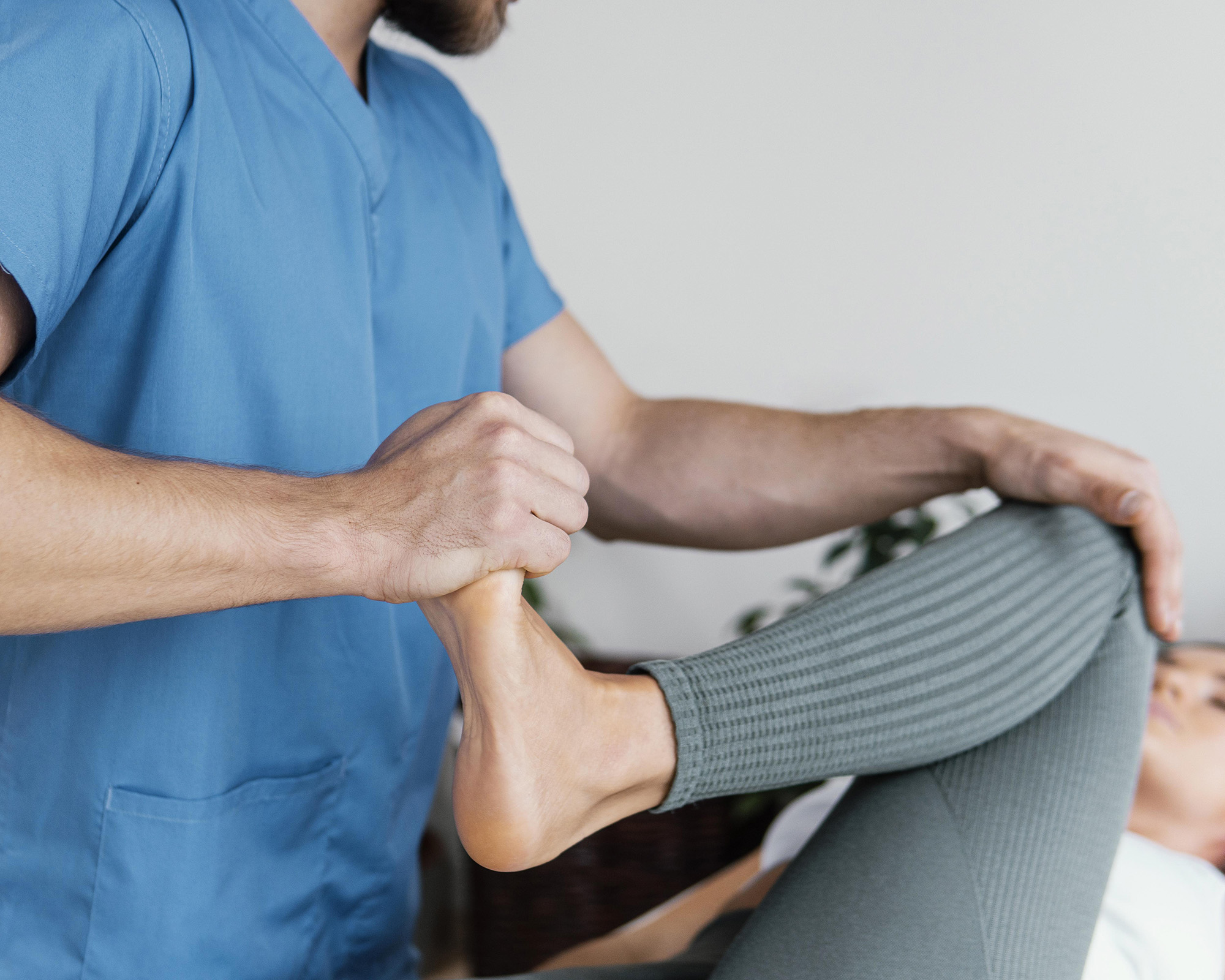An orthopedist diagnoses, treats, and helps you prevent injuries to the bones and soft tissues. These include joint structures like tendons, ligaments, cartilage, and spinal discs. We can prescribe medicine for pain and inflammation. Or if you have joint damage, we may perform minimally invasive surgeries. Orthopedists can also order imaging or perform exploratory surgery to see what’s happening inside.
A physical therapist assesses the posture issues, misalignment, and joint misuse causing pain and inflammation. They can then develop and help you execute a plan to teach your body better form to promote healing. They can often reduce pain levels through physical therapy, promote joint self-healing, and expand your range of motion. After surgery, they also work with us to restore function safely.
This collaboration between your doctor and physical therapy leads to better outcomes for patients in many ways.
1. Pain Management Before Physical Therapy
If you’re experiencing chronic pain, physical therapy may be able to help. But if that pain is too extreme to do physical therapy, you may need medication to reduce the inflammation and pain level. This will allow for more productive physical therapy sessions.
2. Avoid Overreliance on Pain Medication
We work with physical therapists for you. We understand that spending the rest of your life on medication for chronic pain is rarely the answer. And we’re sensitive to the risks of dependence on opioids. When we treat chronic pain with a more comprehensive approach, we can reduce or eliminate the need for medication.
Physical therapy is an integral part of this comprehensive approach. Ongoing sessions can reduce and even eliminate your need for medicine.
3. Preventing the Need for Surgery
You may have a situation where only surgery can provide you with adequate relief or restoration of function. For example, if you have little cartilage left on a joint, physical therapy alone won’t help without a cartilage transplant first.
But when we can prevent the need for surgery, we’re all for that. We collaborate with physical therapists to assess whether or not physical therapy gives the outcome needed. If you don’t need surgery, great!
4. Improving Surgery Outcome
In many cases, having physical therapy before orthopedic surgery can improve the outcome after the surgery. It improves blood flow, strengthens muscles, and promotes tissue health.
Physical therapy after surgery helps prevent reinjury during the healing process while restoring your maximum range of motion and function under the care and guidance of a professional who understands how the body works.
5. Keeping Your Costs Low
Did you know in the U.S., over 300,000 physical therapy sessions take place each year? And studies show this leads to 72% lower healthcare costs versus an orthopedics-only approach? Your doctor and physical therapist serve very different functions in the healing process. But together, we can help lower the cost of medical care and your individual out-of-pocket.
If you’re suffering from an orthopedic injury, pain, or inflammation, we encourage you to contact us to learn more about how orthopedics plus physical therapy can help.


